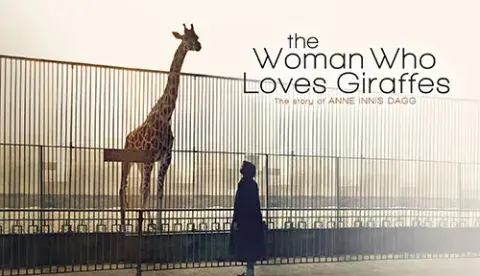
The Canadian woman who was first in the world to study giraffes in the wild, and who is still considered one of the planet’s foremost experts on the species, is only now getting her due.
As part of the 50th Anniversary Film Series, the University was extremely pleased to welcome Dr. Anne Innis Dagg on campus for the exclusive European premiere of her award-winning documentary “The Woman Who Loves Giraffes” on October 16, 2019.
Widely considered the founder of giraffe science, Dr. Dagg was the first to study the giraffe in the wild, the first zoologist to study any African animal in the wild and an inventor of the scientific discipline of behavioral biology. More than six decades and copious academic papers and books later, she is still one of the world’s leading experts on the giraffe, Giraffa camelopardalis.
In 1956, four years before Jane Goodall ventured into the world of chimpanzees and seven years before Dian Fossey left to work with mountain gorillas – in fact, before anyone, man or woman had made such a trip – 23-year-old Canadian biologist, Anne Innis Dagg, made an unprecedented solo journey to South Africa to become the first person and woman in the world to study animal behavior in the wild on that continent. When she returned home a year later armed with ground-breaking research, the insurmountable barriers she faced as a female scientist proved much harder to overcome.
In this award-winning documentary film, Dr. Dagg offers an intimate window into her extraordinary life as a young woman and scientist, juxtaposed with a first-hand look at the devastating reality that giraffes are facing today. Her research findings ultimately became the foundation for many scientists following in her footsteps.
Thanks to the collaboration between the University and the Sonoma International Film Festival - the movie won the 2019 Jury Award and 2019 Audience Award for Best Documentary - we were honored to welcome on campus Alison Reid, award-winning director, and the protagonist, Dr. Anne Innis Dagg, to learn about her impressive scientific career and above all, her curious, extraordinary life story.

